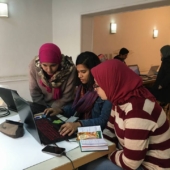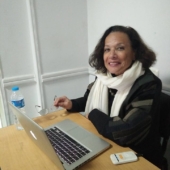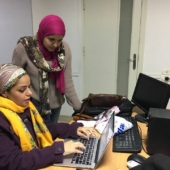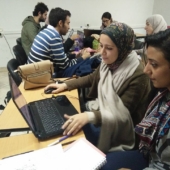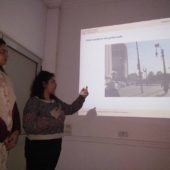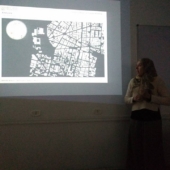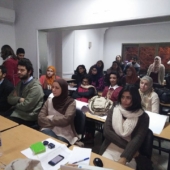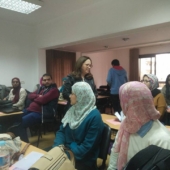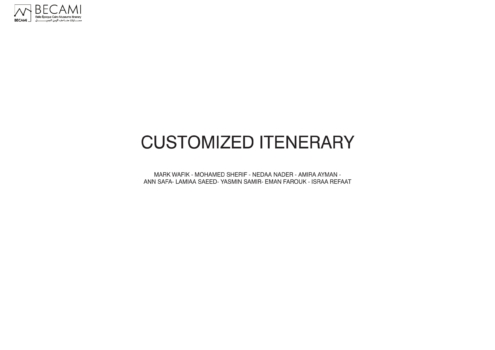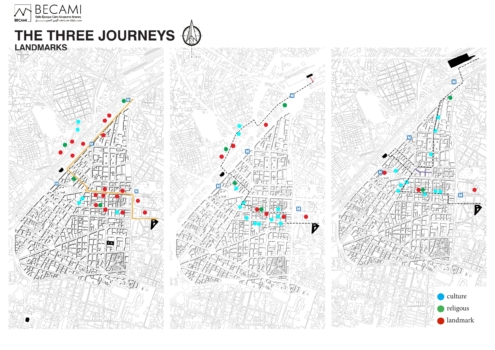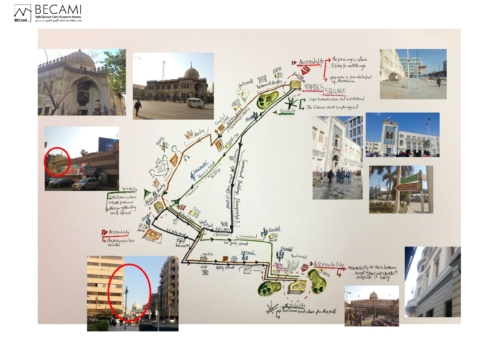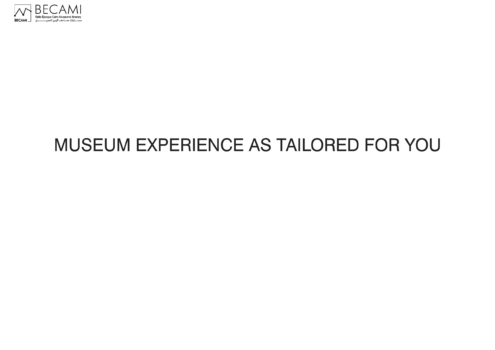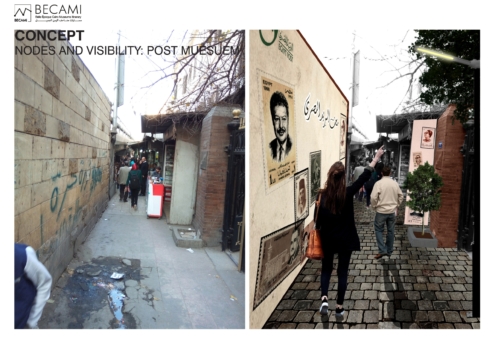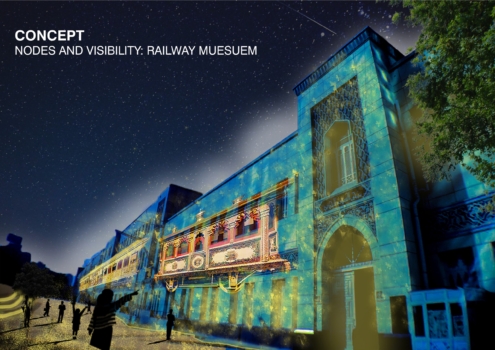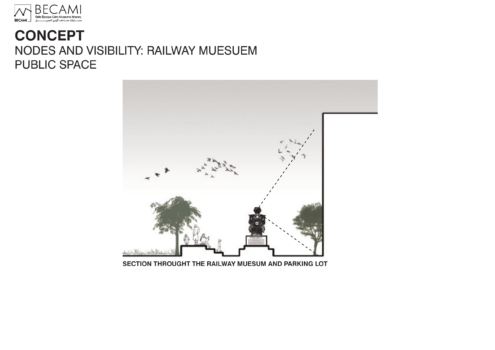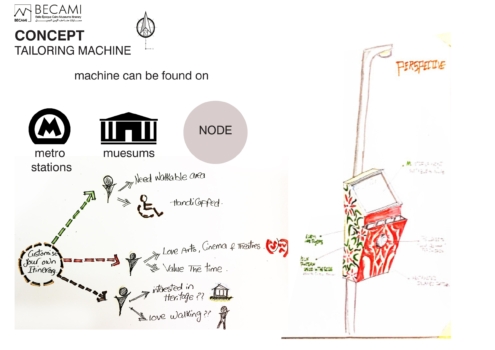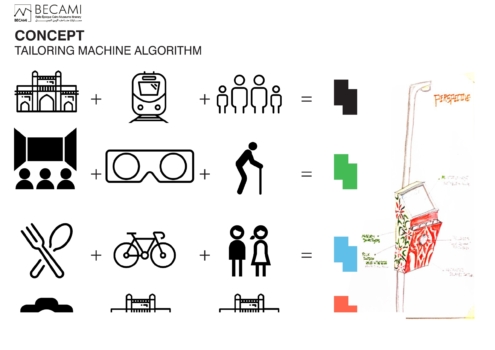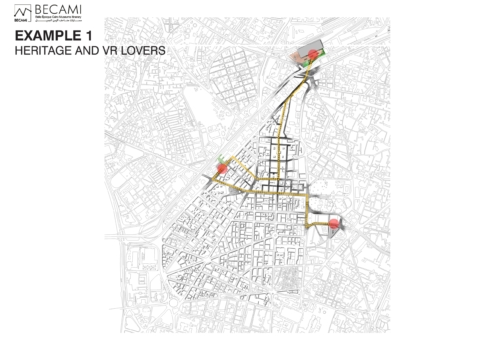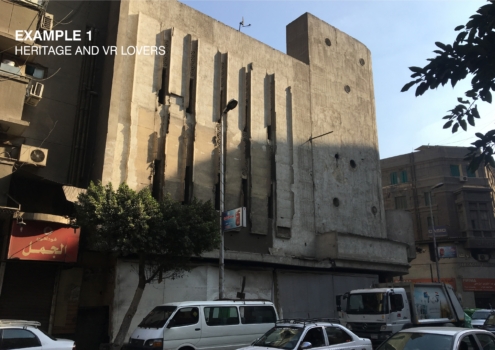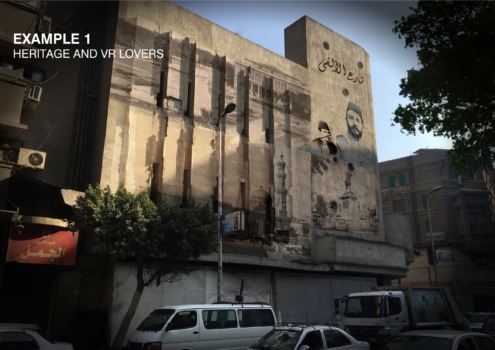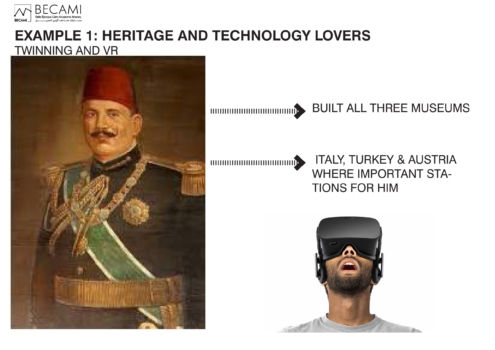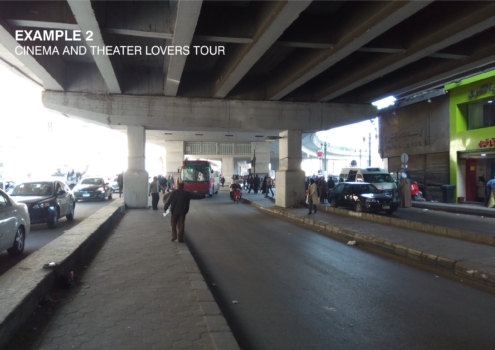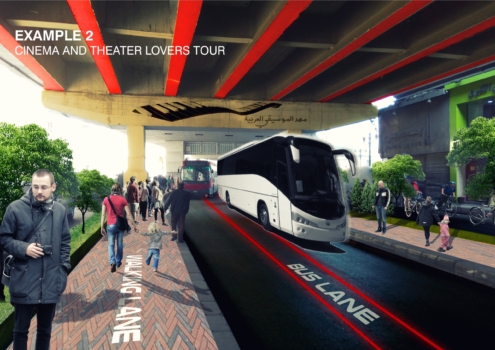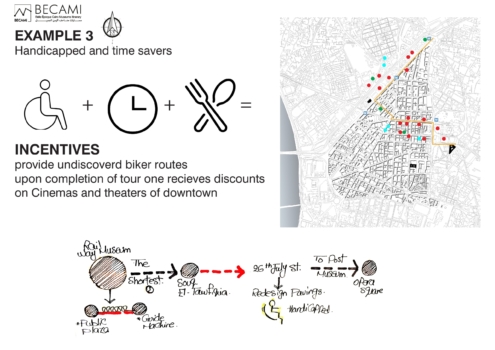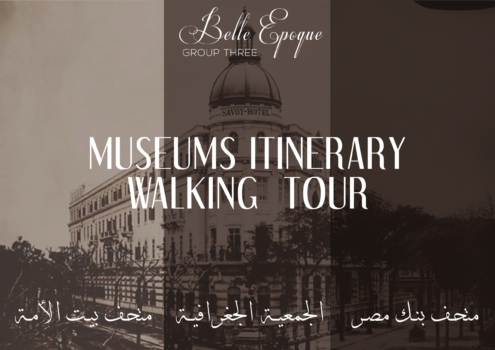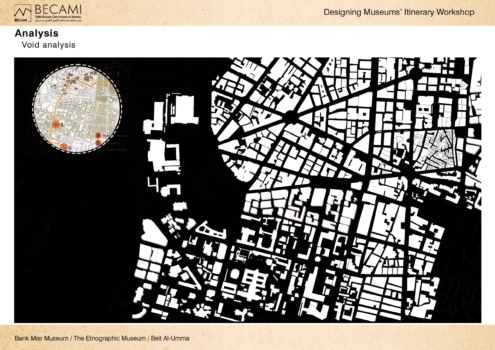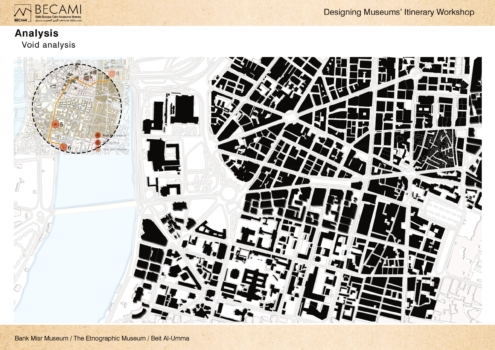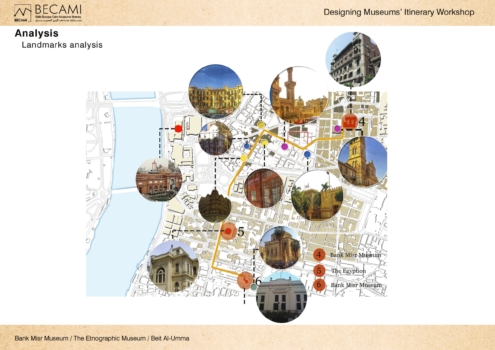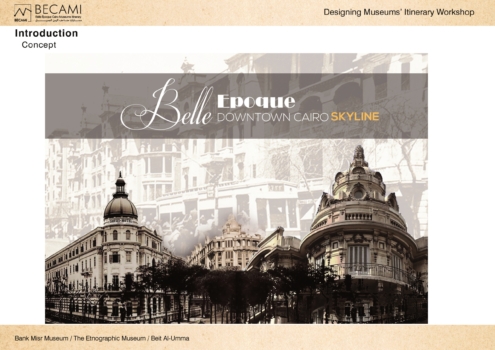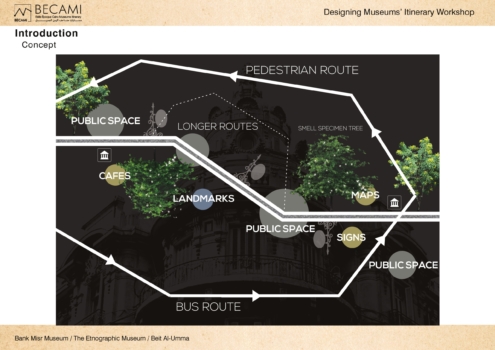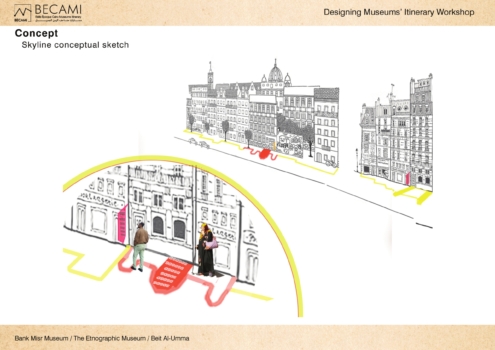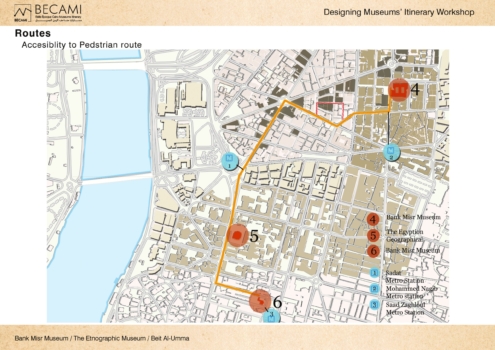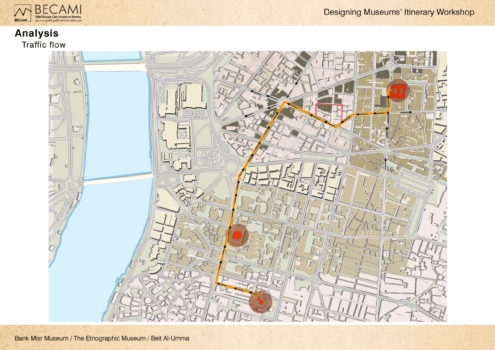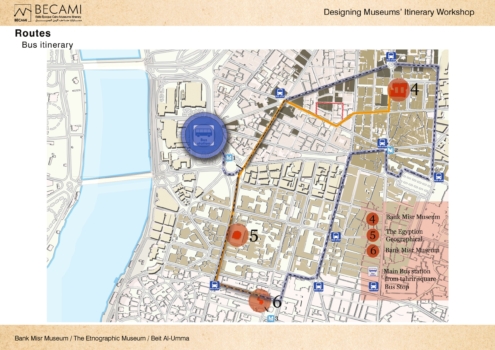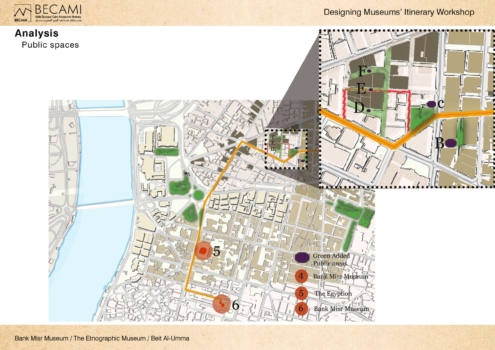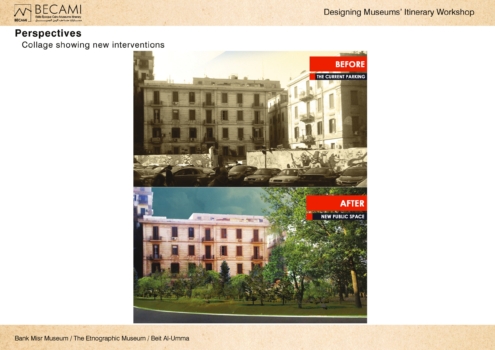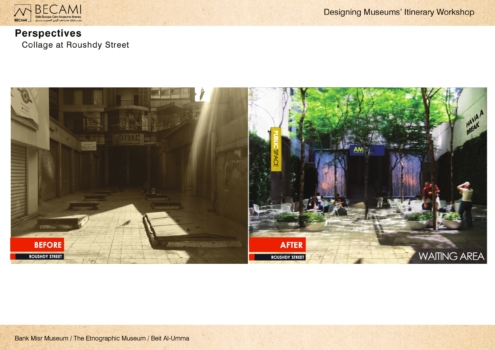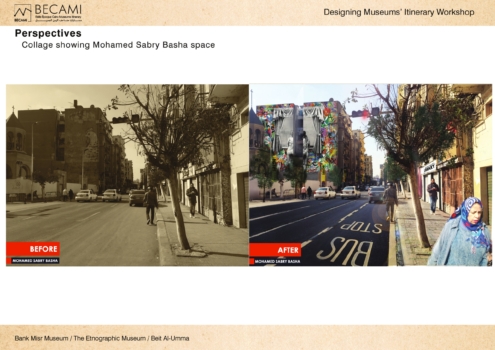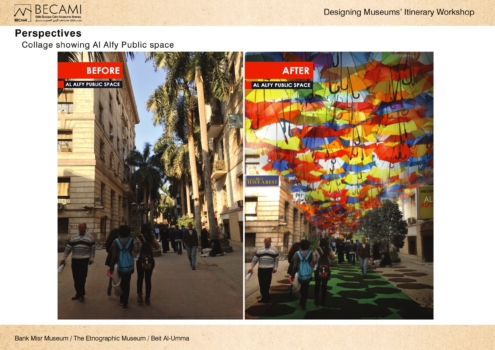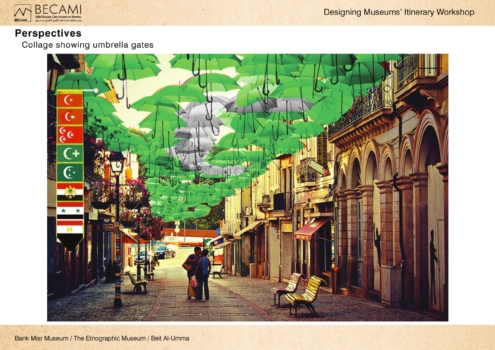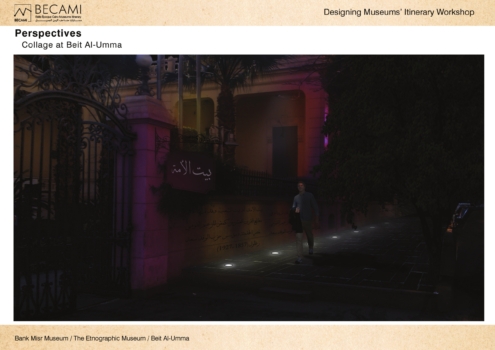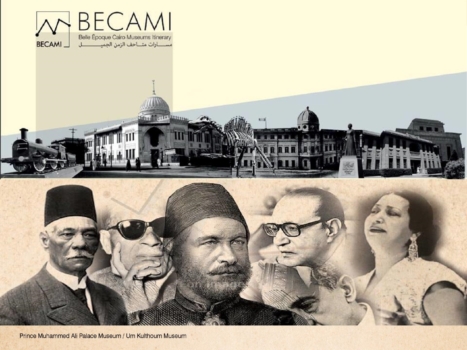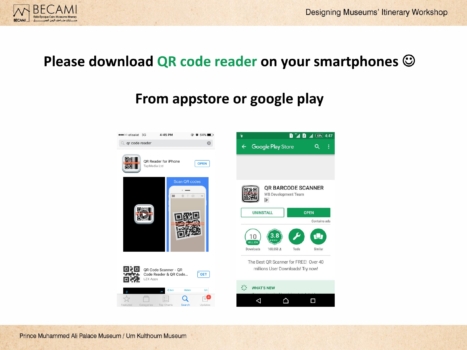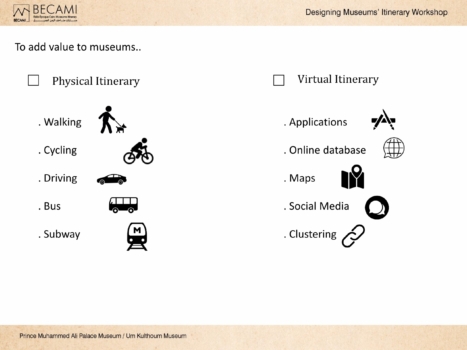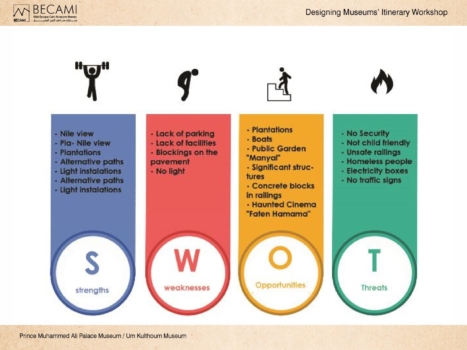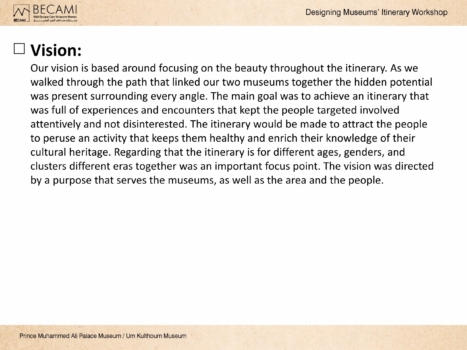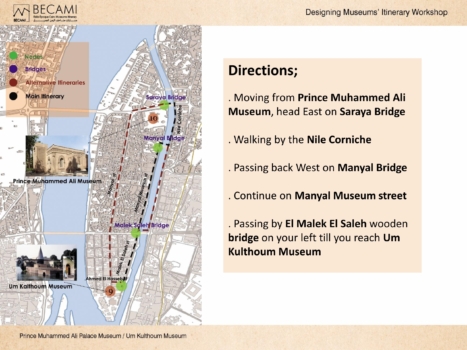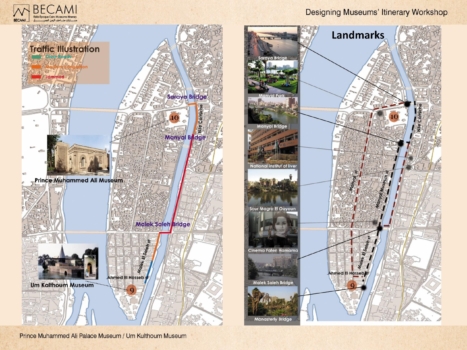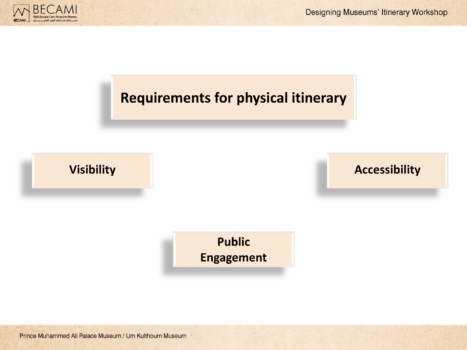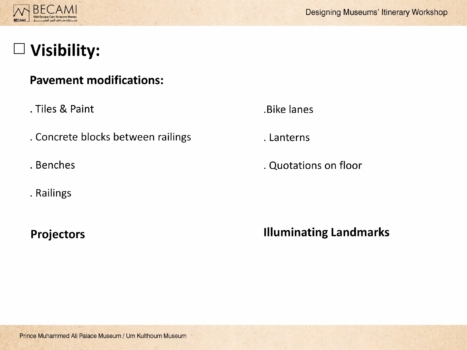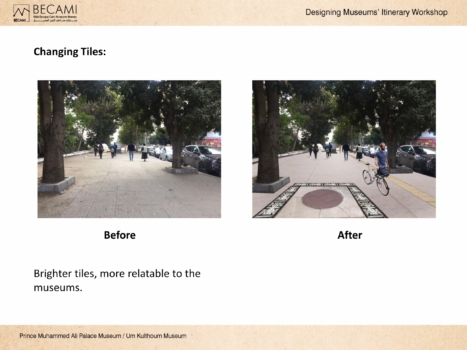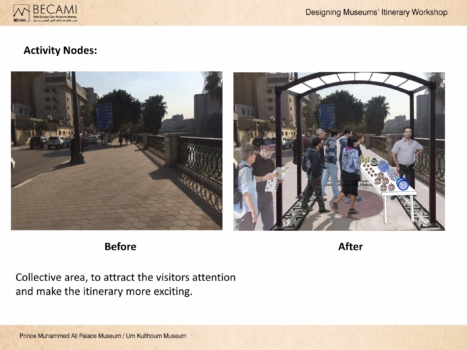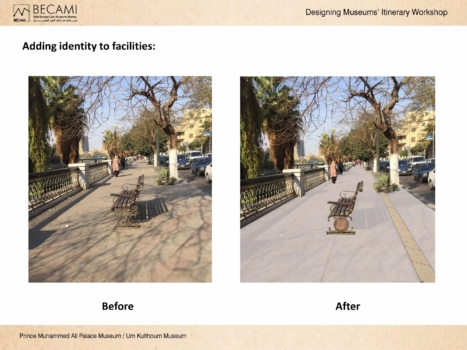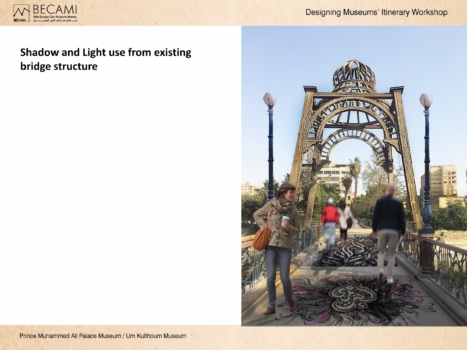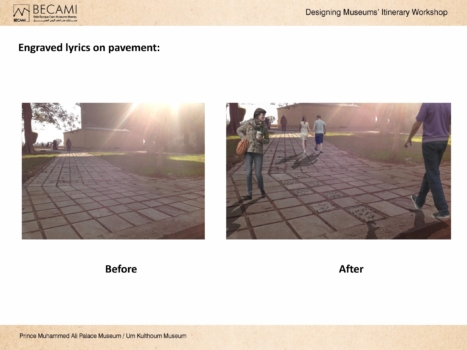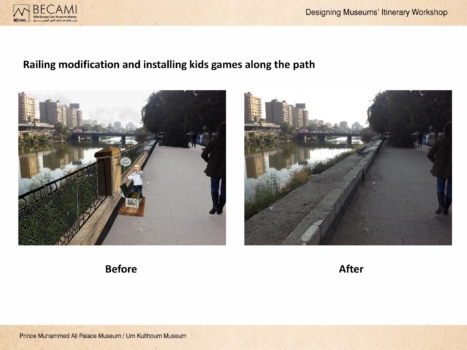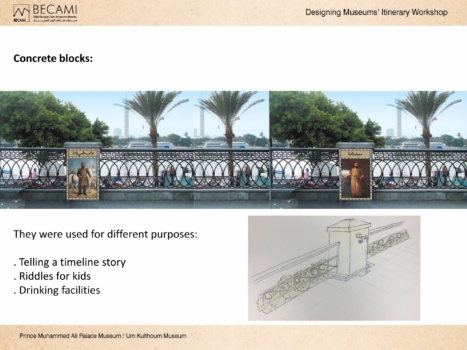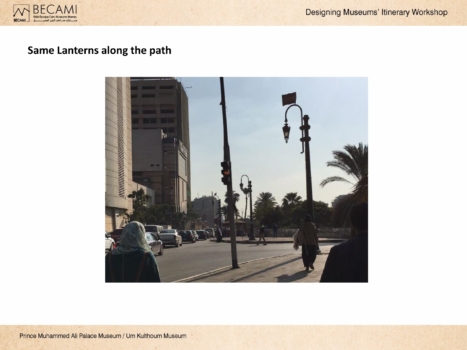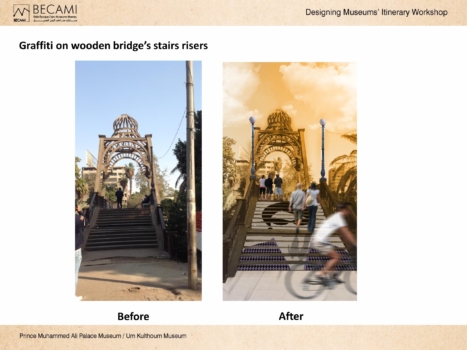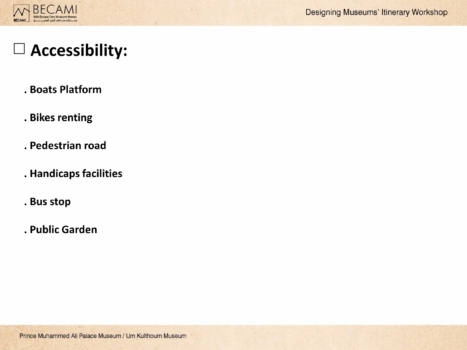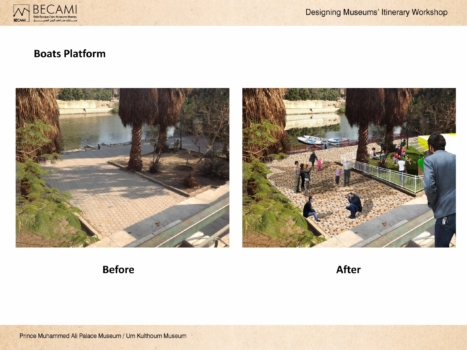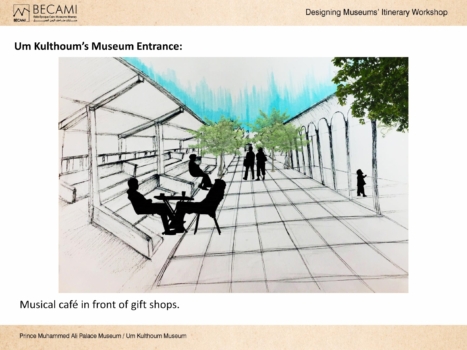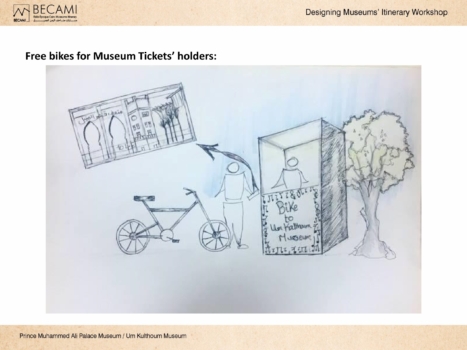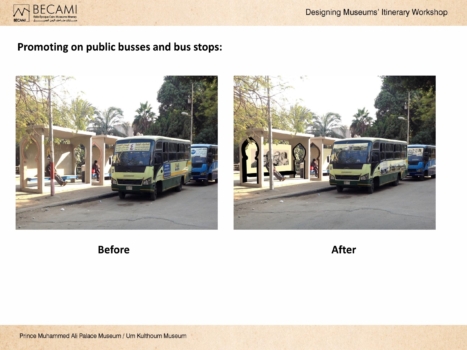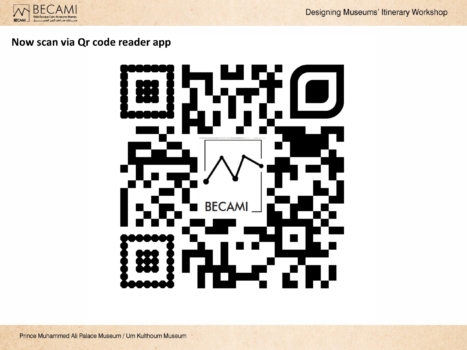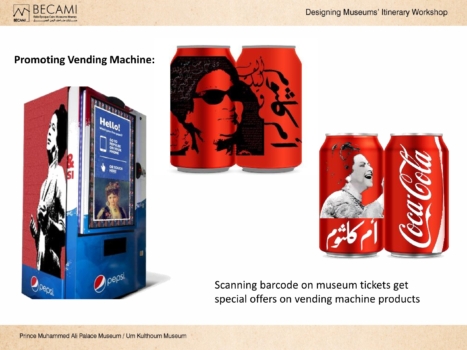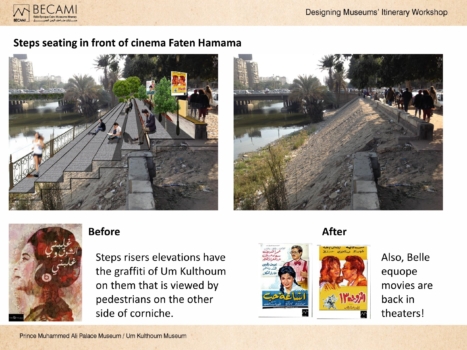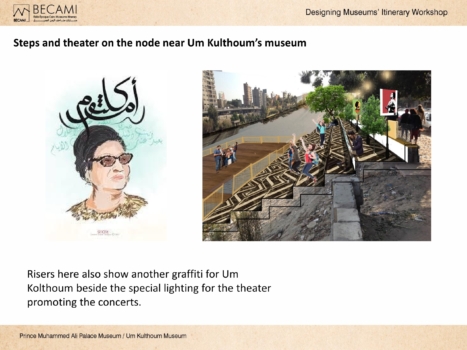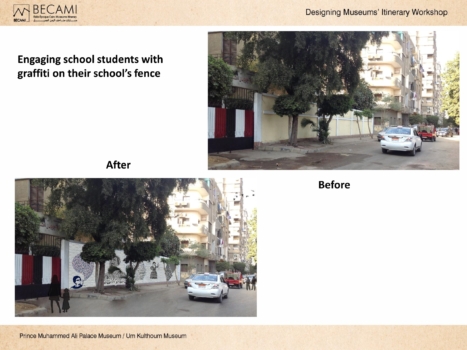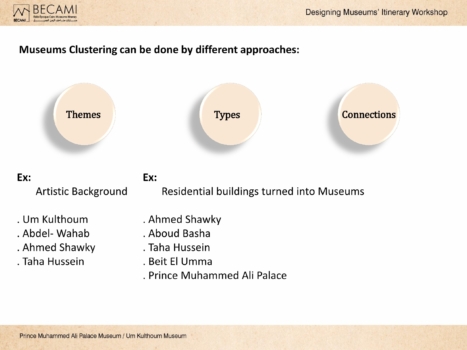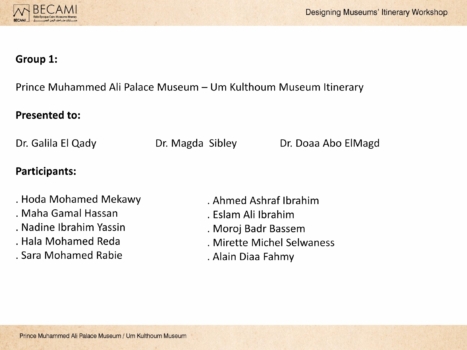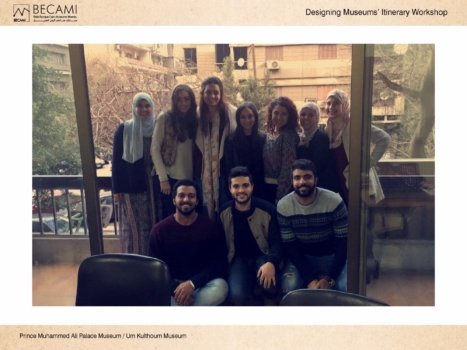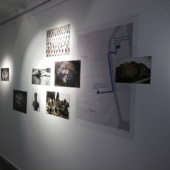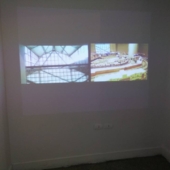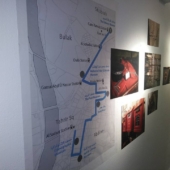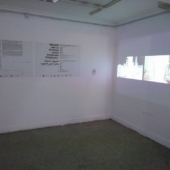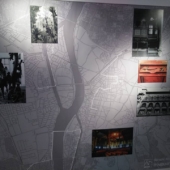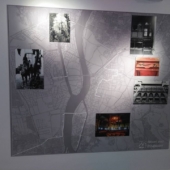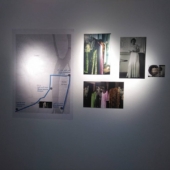The first workshop was held at the campus of the French University in Egypt, for a duration of three days from the 29th to the 31st of January 2017.
Designing the Museum Itineraries
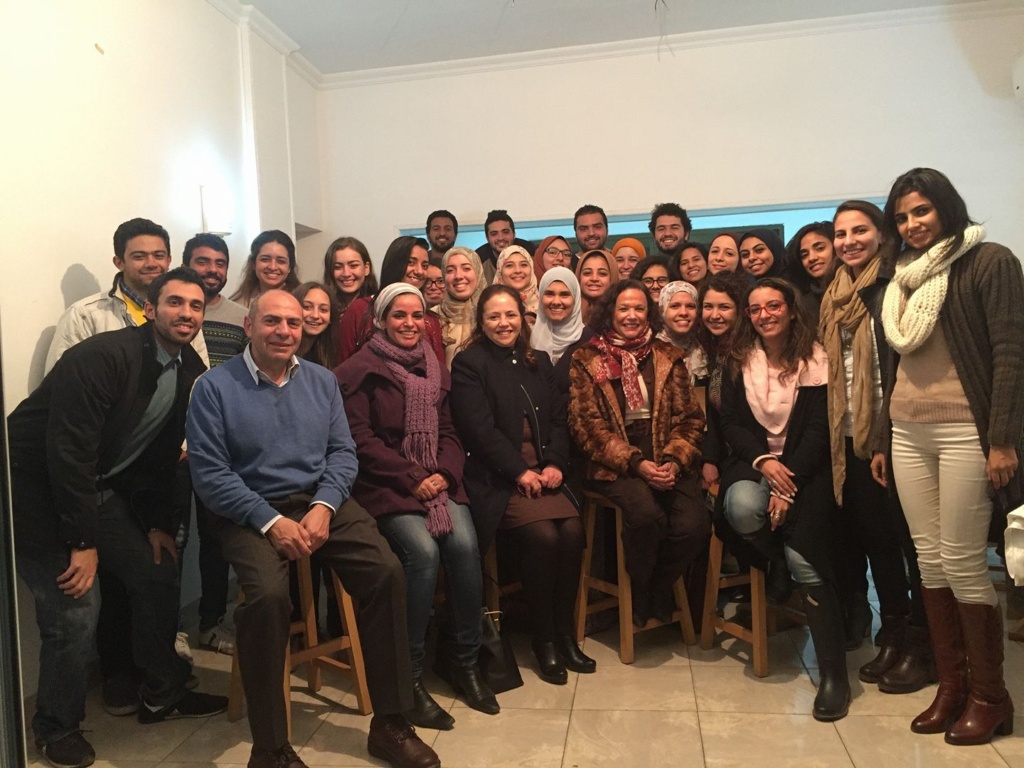
| BECAMI organising team | Prof. Galila El Kadi (Egyptian Principal investigator) |
| Dr. Magda Sibley (UK-Principal investigator) | |
| Dr. Doaa Abouelmagd (Egyptian Co-investigator) | |
| Reem Elsawaf (Architect/BECAMI researcher) | |
| Mahy Hamed (Architect/BECAMI researcher – Teaching Assistant UFE) | |
| Gehan Nader (Architect/BECAMI researcher – Teaching Assistant UFE) |
A public call for participating to the BECAMI workshop was launched through BECAMI Facebook page to attract enthusiastic students from architecture and urban planning backgrounds. 29 students were selected from nine different Egyptian universities: Cairo University, Ain Shams University, Tanta University, Helwan University, Alexandria University, German University in Cairo (GUC), French University in Egypt (FUE), Mansoura University, and October University of Modern Sciences and Arts (MSA). The students were selected by BECAMI team based on their CVs and motivation letters. The workshop took place during three days from 29 to 31.01.17 at the French University campus in Mohandeseen, Cairo, Egypt.
Day one
Participants completed registration and were introduced to the museums with three lectures and walking tours.
The first lecture by Prof. Galila El Kadi, introduced the BECAMI project, its objectives and the given materials to the participants which consisted of: (i) A map of the east and west bank of the Nile in adobe illustrator format with the museums locations and selected itineraries; (ii) The walking itineraries map of all the museums with public transportation; (iii) A map with all the important buildings on the East bank of the Nile, as a heritage to be included in the itineraries.
The second lecture by Dr. Magda Sibley, explained the meaning of the Belle Époque as the period of Egyptian and Arab renaissance movements; al-Nahda. It began in the late 19th and early 20th centuries in Egypt, later moved to ottoman ruled-Arabic-speaking regions including Lebanon, Syria, and others. It is often regarded as a period of intellectual modernization and reform. During this period, and from the twenties of the last century, arts, film industry, music, literature and architecture were flourishing. The Belle Époque designate the golden age in all these fields, when glorious Cairo was attracting with its splendours, visitors and immigrants from around the world. The twelve museums the selected for BECAMI, were built in this period. They are a witness of the refinement in art and architecture. The Belle Époque is representing Egypt’s liberal age with its famous public figures such Saad Zaghloul, Talaat Harb and the Prince Muhammad Ali.
The third lecture by Mahy Hamed and Gehan Nader, presented a previous project on Gumhuriyya street, to give example on how to design an itinerary, taking into consideration important nodes and the site’s potentials.
The students were divided by Dr. Doaa Abouelmagd into three groups to design the three itineraries. The criteria of the division were based on the students’ background on the museums. Each group was transferred by bus to the starting point in their given itinerary. The students were asked to propose new itineraries and take photos and notes from their visit. During the second and third days, each group of students brainstormed and developed their ideas under the supervision of the BECAMI team. At the end of the third day each group presented the final work.
Day two
BECAMI itinerary first workshop aimed to engage university students in the creation of a walking and virtual itinerary of 3.6 km and a narrative connecting eight of these twelve museums hence allowing a greater visibility and an increased number of visitors from a variety of backgrounds. The choice of the museums relayed upon two main criteria : the walking distance of 3.6 kms ; the existence of valuable buildings ; and the existence of a strong path, such as the Nile river. The eight designated museums were clustered into three itineraries based on their geographical locations within walking distance from each other.
| First itinerary | Group 1 |
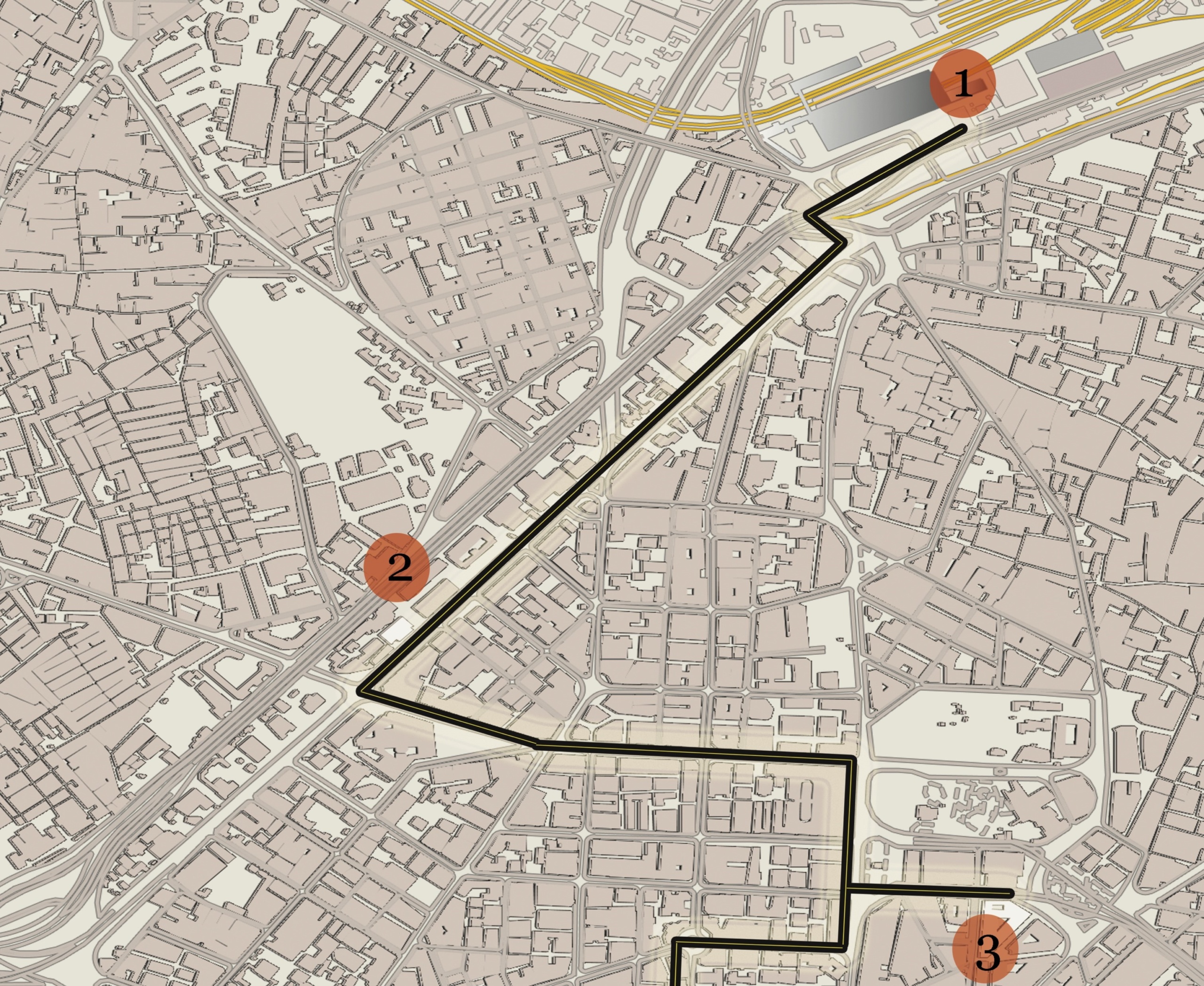 | First Itinerary Museums: Railway museum Abdel Wahab Museum Post museum |
| Second itinerary | Group 2 |
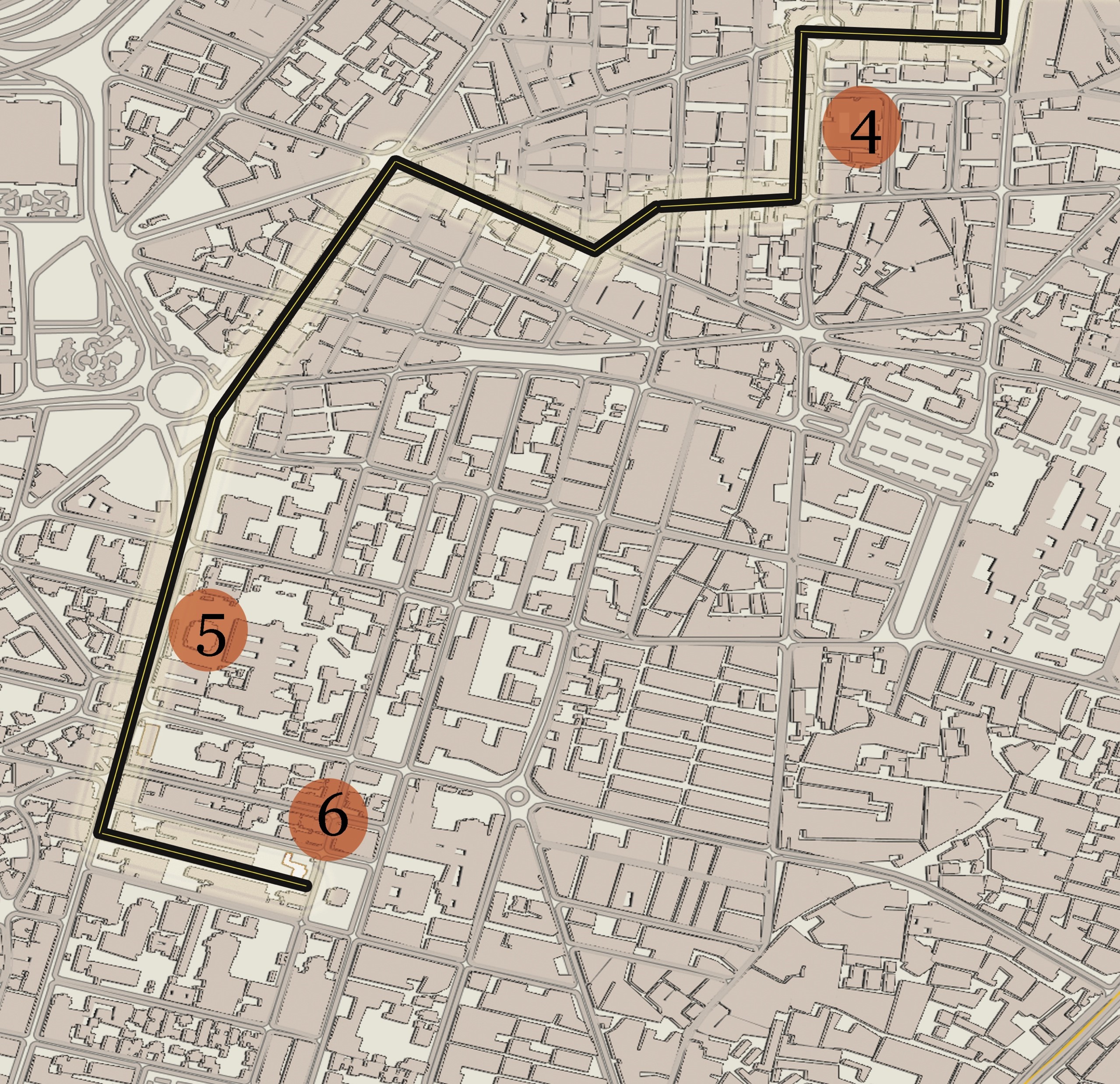 | Second Itinerary Museums: Bank Misr museum Egyptian Geographical society museum Beit El Umma museum |
| Third itinerary | Group 3 |
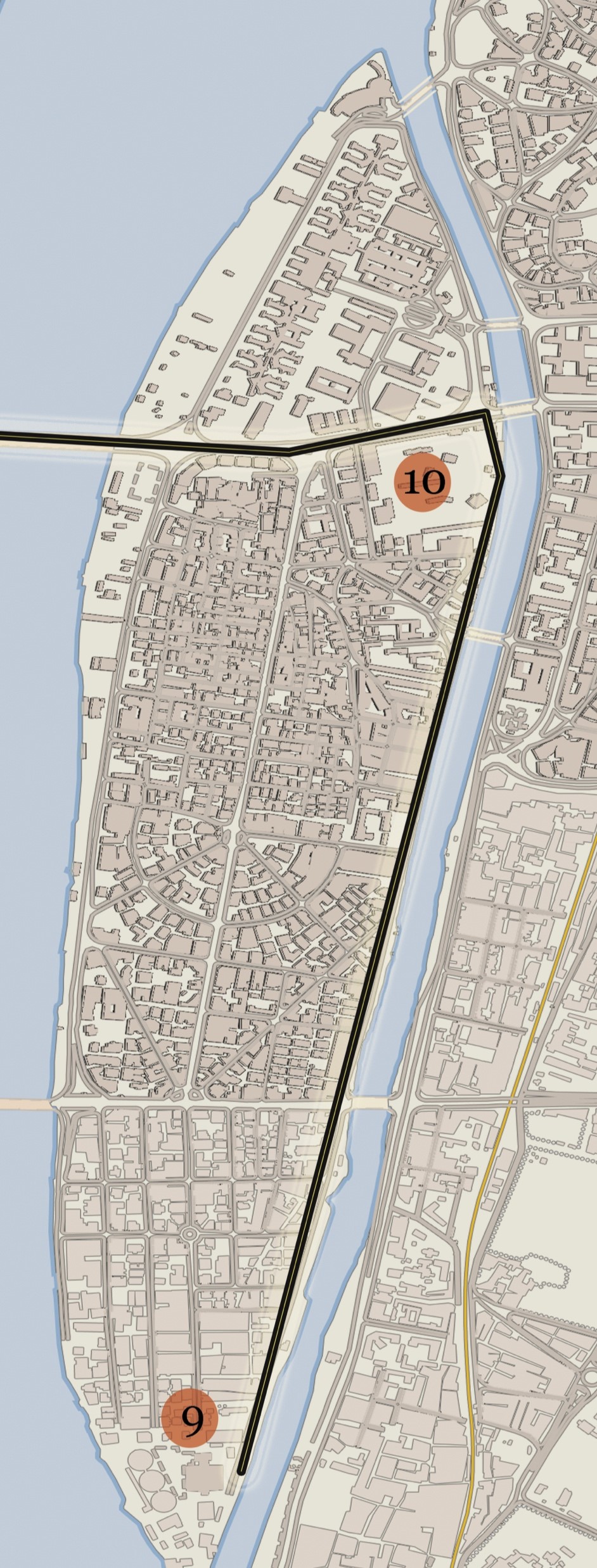 | Third Itininerary Museums: Prince Mohamed Ali museum Um Kulthoum museum |
Group 1
To see the students’ proposal click on the images above
They focused on the users’ preferences and suggested three new itineraries:
1-Heritage lovers’ itinerary,
2-Cinema and Theatres Lovers’ itinerary,
3- Disabled and Time Saver Itinerary.
Group 2
To see the students’ proposal click on the images above
While experiencing the itinerary, they focused on the senses, and suggested three new itineraries based on the scents and lights. They included tourists’ bus and pedestrian itineraries, with public space regeneration and many scented trees and flowers which could attract and direct.
Group 3
To see the students’ proposal click on the images above
They used an integrated approach suggesting new physical and virtual itineraries focusing on cultural sustainability through public engagement, cultural heritage and economic viability.
Photography exhibition
Through the itineraries II
| Date: | 31st January 2017 to 9th February 2017 |
| Location: | Bayt al-Umma Museum |
| Exhibition Curator: | Dr. Eman Abdou |
This exhibition is the second in the series of “Through the Itineraries Exhibitions” which aim to engage the local community and increase the exposure of the Belle Époque Cairo Museums itinerary (BECAMI) project. It was launched under the auspices of the Minister of Culture, Mr.Helmy El-Namnam and the Head of the Fine Arts Sector Prof .Dr. Khaled Sorour.
The thirteen participants were students at the Faculty of Fine Arts (Helwan University), from the Departments of Architecture and Painting. They presented maps, photographs and videos which demonstrated their journey of re-experiencing the past and building new memories from, charging the past with tangible moments of awareness.


